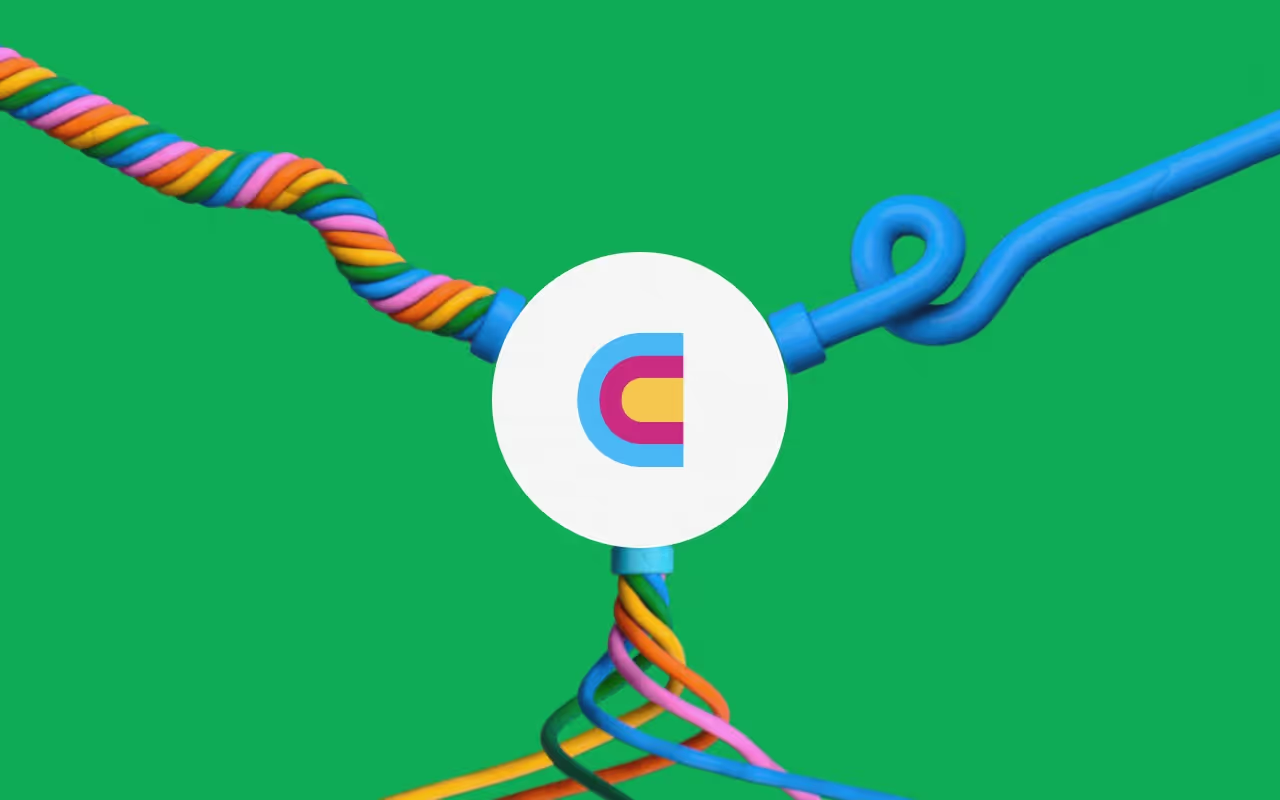🎯 TAM Sourcing with Clay: Strategic Market Intelligence
Introduction
If you've been through Clay 101, you already know how powerful Clay can be for finding and enriching individual prospects. But today, we're stepping back to look at the bigger picture: how to systematically identify and quantify your entire market opportunity.
By the end of this lesson, you'll understand the strategic importance of TAM sourcing, be able to distinguish between your TAM and ICP, and see why traditional approaches to market sizing fall short in today's data-rich environment.
🔍 What is TAM Sourcing and Why Does It Matter?
Most companies are flying blind when building their pipeline— relying on stale lists, missing entire segments of their market, and spending more time building lists than actually selling. This reactive approach wastes resources and leaves opportunities on the table.
With Clay, you now have access to real-time data about practically every company in the world. You can see their tech stacks, hiring patterns, funding stages, and growth signals to identify not just who might be interested in your product, but who's actually ready to buy it right now.
This is what TAM sourcing is all about: moving from guesswork to data-driven market intelligence. Instead of manually hunting for individual prospects one by one, you're systematically mapping your entire addressable market.
Think of it like the difference between fishing blindly with a single hook versus using sonar to map where all the fish are before you even cast your line. Traditional prospecting is reactive—you find leads, qualify them, and hope they convert. TAM sourcing is proactive—you understand your entire market landscape first, then strategically target the highest-value segments.
Critical Business Applications
This approach is critical for several key business functions:
Product-Market Fit Validation: When you can see your entire addressable market, you can test whether your product actually solves a widespread problem or if you're just finding isolated use cases. Real market visibility helps you distinguish between genuine product-market fit and confirmation bias.
Strategic Decision-Making: Should you expand to new verticals? Double down on your current market? TAM sourcing gives you the data to make these calls with confidence, informing resource allocation, prioritization, and investment decisions with actual market intelligence.
Fundraising Support: Investors want to see credible market sizing backed by real data, not just hockey stick projections based on wishful thinking. Comprehensive TAM analysis demonstrates market opportunity with evidence rather than assumptions.
In today's competitive landscape, the companies that win are the ones that build GTM alpha, who can identify and capture market opportunities faster and more intelligently than their competitors.
🚫 Why Traditional TAM Sourcing Methods Are Broken
Stale Data
Those Gartner reports you're relying on? They're based on data that's often 6-12 months old by the time they're published. In fast-moving markets, that lag makes the data functionally useless. Markets evolve constantly—companies get acquired, change their tech stacks, hire new teams, raise funding. Static analysis simply can't keep up.
Confirmation Bias and Limited Coverage
Manual research creates confirmation bias where you find companies that look like existing customers, missing entire segments of your market that don't fit preconceived patterns. Traditional methods can't provide comprehensive coverage or identify emerging opportunities that don't match historical patterns.
No Buying Readiness Assessment
Just because a company fits your demographic criteria doesn't mean they're actually reachable or ready to buy. Traditional methods don't factor in competitive dynamics, current tool satisfaction, or buying readiness signals that determine whether prospects will actually engage.
Treats All Prospects Equally
Traditional TAM estimates treat all prospects equally, but we know that companies in different growth stages, industries, or tech environments have very different buying patterns and timelines. Static segmentation can't adapt to these nuances.
🎯 TAM vs. ICP: A Critical Distinction
Understanding the difference between TAM and ICP is essential for effective market planning and go-to-market execution.
Defining the Terms
Your TAM (Total Addressable Market) is the complete universe of accounts that could theoretically buy your product. This is the total opportunity you're sizing for strategic planning purposes—the entire market you could potentially serve.
Your ICP (Ideal Customer Profile) is the qualified, high-intent prospects within that TAM—the specific subset most likely to buy right now based on buying signals, fit characteristics, and readiness indicators.
Think of it this way: TAM is every company that could potentially use your product. ICP is the portion of your TAM you should be actively targeting today.
Practical Example
Let's say you sell marketing automation software to illustrate the difference:
Your TAM might include every company with a marketing team—that could be millions of companies globally across all industries, company sizes, and maturity stages.
But your ICP might be B2B SaaS companies with 50-500 employees, $10M+ in revenue, currently using basic email tools, and showing growth signals like recent hiring or funding rounds.
TAM helps you understand market size and long-term opportunity for strategic planning and investment decisions. ICP helps you focus your go-to-market efforts on the prospects most likely to convert right now, optimizing near-term pipeline generation.
TAM Sourcing with Clay: Building GTM Alpha
Traditional methods force you to choose—build comprehensive market maps OR focus on high-intent prospects. Clay lets you do both simultaneously through a systematic approach:
Start by building your complete TAM using Clay's comprehensive filters to capture your entire addressable market. Then, enrich each company with real-time data related to growth signals and buying readiness using Clay's 150+ data sources.
Now you can segment dynamically based on actual signals rather than assumptions. Your TAM stays comprehensive, but you can instantly filter to your ICP based on real buying signals, competitive positioning, and readiness indicators.
As markets shift—companies raise funding, change tools, expand teams—Clay updates automatically, ensuring your market intelligence stays current without manual maintenance.
The result? You never miss opportunities hiding in your TAM, and you always know exactly who's ready to buy today. This dual capability transforms how you approach market planning and execution.
🚀 Why Clay is the Platform for TAM Sourcing
Here's why Clay has become the platform of choice for data-driven TAM sourcing and strategic market intelligence.
The CPJ Dataset
Clay's CPJ dataset—Company-People-Jobs—contains over 40 million companies and 900 million contact profiles across global markets. Unlike traditional data providers, this isn't a static database that becomes stale within months.
Clay updates this data in real-time, giving you a live view of company firmographics and contact demographics in one unified system. This real-time updating means your market intelligence reflects current reality, not historical snapshots.
Data Coverage
Clay aggregates data from 150+ specialized sources, allowing it to provide global coverage and granular data insights that would be impossible to compile manually. This aggregation is critical for building GTM alpha in TAM sourcing—you're not limited by any single data provider's coverage or perspective.
💡 Real-World TAM Sourcing Workflows
As a preview, here are some example industry-based workflows you'll be able to build after this course.
Cybersecurity Software Example
Say you're building a TAM map for cybersecurity software targeting mid-market financial services companies. With Clay, you can layer on technographic data to understand current security tools, scrape regulatory filings for compliance requirements, and use signals to spot organizations with recent security events or new CISO hires.
E-commerce Marketing Services Example
Let's say you're selling marketing services to e-commerce brands. With Apify's Instagram and web scrapers integrated into Clay, you can pull follower counts, engagement rates, and posting frequency to identify brands with strong social presence but poor conversion signals—perfect candidates for your optimization services.
Restaurant POS Systems Example
Maybe you're selling POS systems to independent restaurants and small restaurant chains. Traditional databases miss most local establishments, but Clay's OpenMart integration gives you comprehensive coverage of every restaurant with a physical location.
You can then leverage Claygent to analyze customer reviews, understand their current tech stack limitations, and check for signals like recent expansion or new menu items that indicate growth and investment capacity.
🎯 The Competitive Advantage
Companies that master data-driven TAM sourcing gain significant competitive advantages that compound over time:
Early Opportunity Identification: They identify opportunities before competitors by monitoring the entire market rather than reactive prospecting from inbound signals or referrals.
Confident Segmentation: They size new market segments with confidence, using real data about company counts, characteristics, and buying signals rather than assumptions and projections.
Rapid Adaptation: They adapt quickly to market changes because they have real-time visibility into market dynamics, competitive movements, and emerging opportunities.
Everything we just covered—systematic identification, real-time enrichment, behavioral segmentation—Clay enables at scale.
✅ Key Takeaways
TAM sourcing represents a fundamental shift from reactive prospecting to proactive market intelligence. Traditional methods relying on stale data, manual research, and static segmentation can't compete with real-time, data-driven approaches.
Understanding the distinction between TAM (total addressable market) and ICP (ideal customer profile) is essential for balancing strategic planning with tactical execution. Clay enables both simultaneously through comprehensive data coverage and dynamic segmentation.
Clay's CPJ dataset, combined with 150+ data sources and real-time updating, provides the infrastructure for building sophisticated market intelligence that drives genuine competitive advantage.
In our next lesson, we'll walk through building comprehensive TAM maps using Clay's company search, showing exactly how to layer data sources into market maps that drive real GTM strategy and pipeline generation.
Connect, explore and learn together
Read our GTM blog, or try out our top Claybooks and templates to transform your growth ideas into outreach in minutes.





















